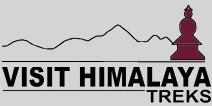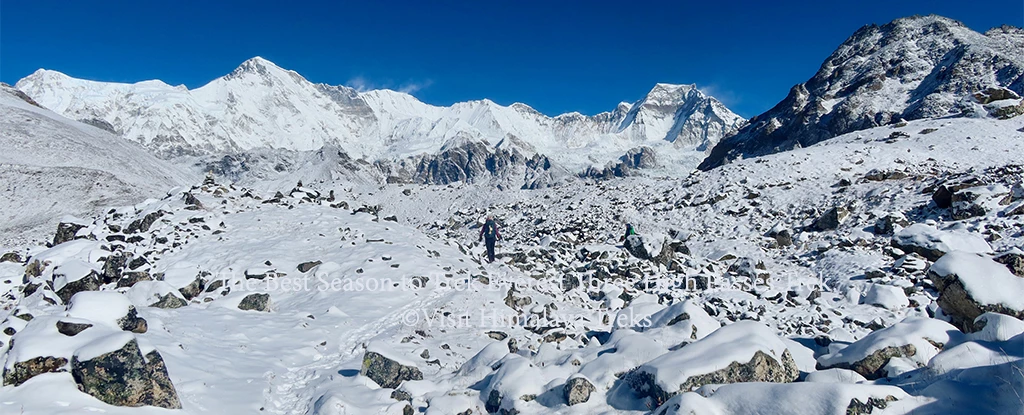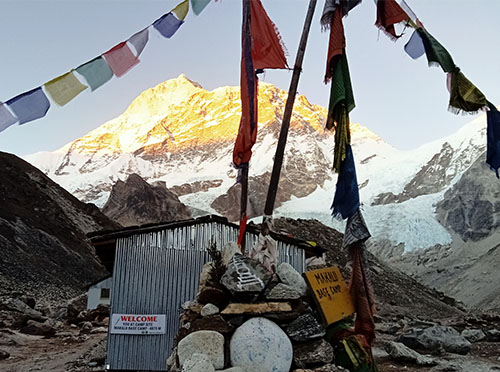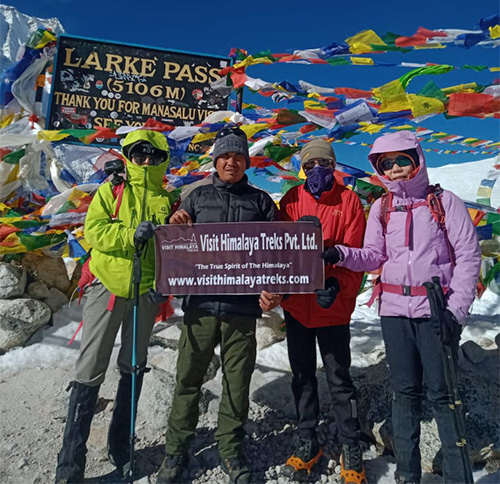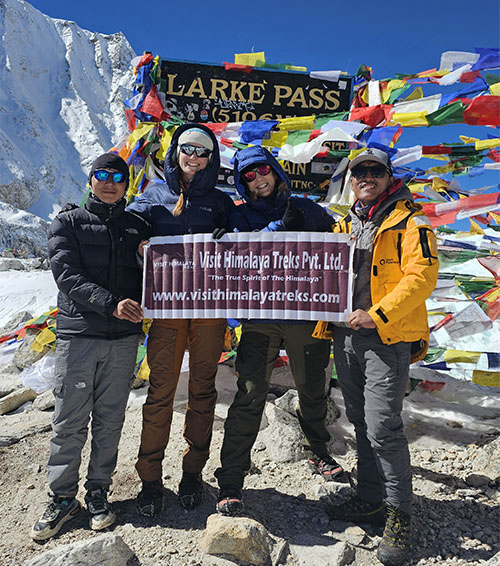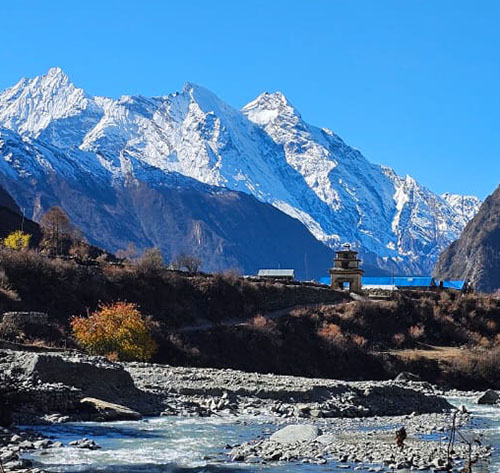The Everest Three High Passes Trek is one of the most spectacular and challenging excursions in the Khumbu Himalayas of Nepal. The trek takes you deeper into the Everest Region, where you'll find unbeatable panoramas of the Himalayas, glaciers, and diverse cultural experiences. The Everest Three High Passes Trek not only leads you to the renowned Everest Base Camp, but also across three high mountain passes Kongma La (5,535m), Cho La (5,420m), and Renjo La (5,360m).
The best season guarantees clear, favorable weather for the trek and maximizes the enjoyment of the Everest Three High Passes trekking. Therefore, determining the best season for this trek to have an unforgettable experience is essential. The trail traverses several steep and rugged hamlets, including Namche Bazaar, Tengboche, Dingboche, Chhukung, Thame, Dzonly, and Marlung. Passing through these routes requires clear weather on the trek, which also helps to enhance the Everest Three High Passes Trekking experience in the best way possible.
Consequently, before embarking on the Everest Three High Passes Trek, it is necessary to forecast and analyze the weather patterns of the Everest region or to recognize the best season. We will look at the best season to Trek Everest Three High Passes Trek, the highlights of each season, and the settlements and places you will come across along the route.
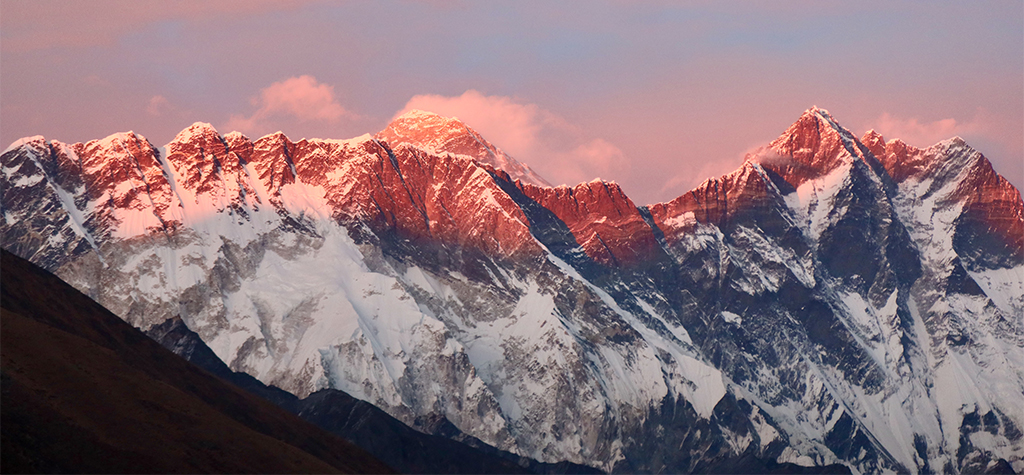
Wonderful sunset view over Nuptse wall, Everest, and Lhotse from left to Right.
Why the Best Season Matters for the Everest Three High Passes Trek.
The Everest region undergoes four seasons of the year, each of which provides distinctive trekking experiences. Picking the appropriate season will guarantee that you get the finest weather conditions, unobstructed vistas, and secure trekking situations. Each season has its unique beauty and complications, and knowing what to anticipate will help you organize and get ready for Everest Three Passes Trekking more effectively. The best season offers the finest temperature, weather, and views of the Everest region.
Spring Season (March to May) Weather and Temperature.
Spring is one of the best seasons to Trek to Everest High Three Passes Trek. There won't be much rain or a hazy atmosphere to spoil the breathtaking view of the Valley and the Himalayas. The end of winter leaves some cold nights, but during the day, the bright sun and blue sky provide a pleasant mood and ideal weather for trekking throughout the Spring season.
The Everest region's westerly breeze drives out humidity, resulting in clean and pristine surroundings. The weather at this time is rather consistent, with moderate temperatures and clear sky. Lower altitudes experience daytime temperatures ranging from 10°C to 15°C (50°F to 59°F), although higher elevations can be cooler, particularly at night, with temperatures sliding below freezing.
Key Attractions of Spring Season on Everest Three High Passes Trek.
With wonderful weather and a lively and colorful trekking experience, spring is the perfect season for undertaking the Everest Three Passes Trek. The scenery is painted with vibrant colors as the trails become lush with blossoming rhododendrons, magnolia, and other wildflowers. Trekking is pleasant and comfortable during this time of year due to the consistent weather and moderate daily temperatures. The highest peaks, like Everest, Lhotse, and Ama Dablam, are visible under clear skies, making the best opportunity for Photography.
The longer daytime hours allow for longer trekking days, allowing trekkers plenty of time to acclimate and appreciate the breathtaking views. Furthermore, spring is the pre-monsoon season, meaning there is less danger of snow or rain, making trekking safer and more enjoyable. Local celebrations like the Dumje Festival provide a window into the lively culture and rich customs of the Sherpa people, adding to the enrichment of the cultural component during this time of year.
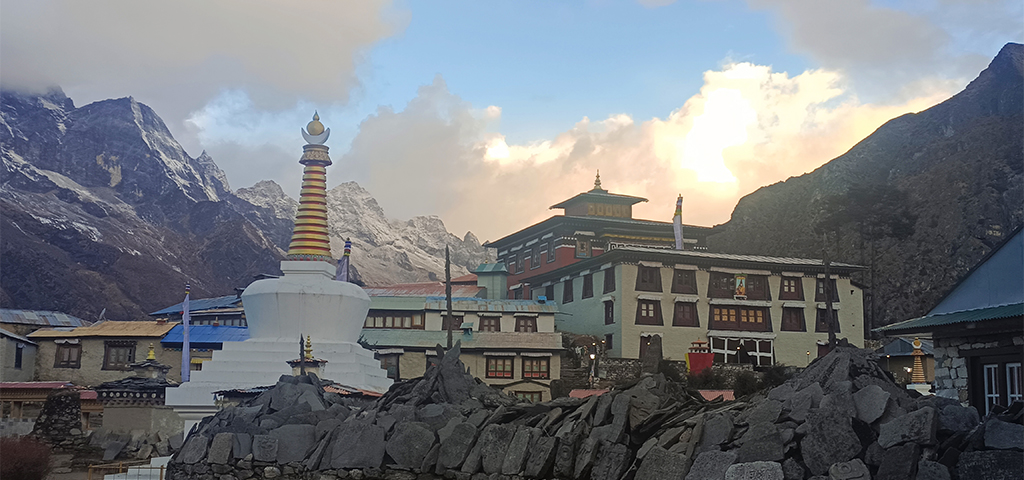
Buddhist Stupa, Mani wall, and popular and well-known Tengboche Monastery.
Autumn Season (September to November) Weather and Temperature.
Autumn is another best season for trekking in the Everest region. The weather is consistent, with a clear sky and comfortable temperatures. The westerly breeze gives the beauty of a tranquil atmosphere and sunny skies. Some rain is likely, although it will not be particularly heavy. While traversing Sagarmatha National Park's gorgeous pine forest, one may come across several endangered species that inhabit the Everest region. At lower elevations, daytime temperatures range from 10°C to 18°C (50°F to 60°F), although nights are cooler, particularly at greater altitudes.
Key Attractions of Autumn Season on Everest Three High Passes Trek.
The Everest Three Passes Trek is very popular in the autumn. The atmosphere is clean and crisp and the scenery is stunning. After the monsoon, the sky is clear of dust and haze, offering some of the greatest views of the Himalayan peaks. Trekking conditions are great due to the constant dry weather and pleasant temperatures. Weather-related disruptions are rare, the trails are in great shape, and there is less chance of mud or snow. Trekkers especially like this season because of the clear mountain views and comfortable temperatures. Autumn brings with it significant cultural celebrations like Mani Rimdu, celebrated at Tengboche Monastery, where trekkers may witness traditional Sherpa dances, ceremonies, and traditions.
Also, the largest celebration of Nepalese people, Dashain and Tihar, corresponds with the beginning of this season. Trekking becomes even more captivating because of the landscape's vivid and new appearance due to the recent monsoon's abundant greenery. The ecosystem is also more active and trekkers may come across Musk Deer, Himalayan Thars, and a variety of bird species while following the trails. Autumn is a great season to undertake the Everest Three Passes Trek because of the stunning scenery, consistent weather, and plenty of cultural activities.
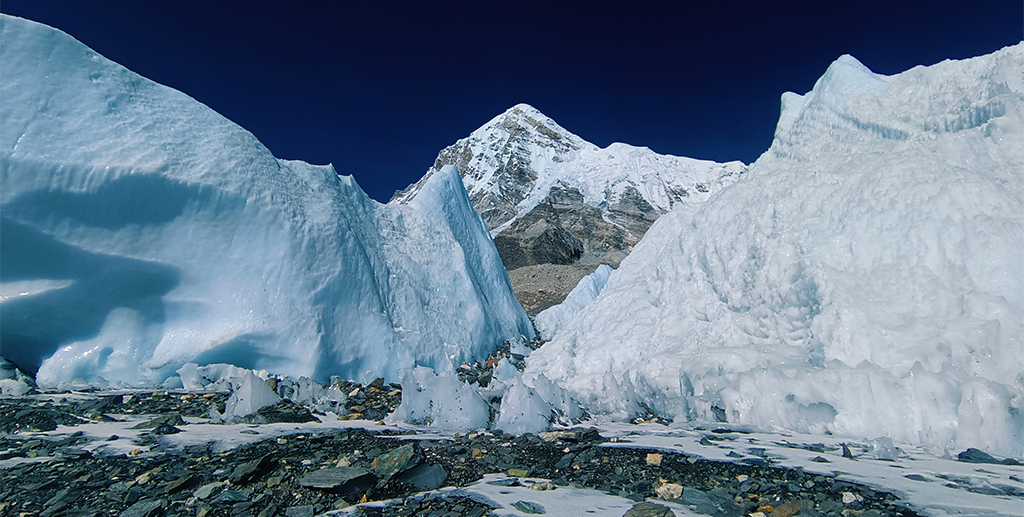
Close view of Everest Base Camp view in the Winter season.
Monsoon/Summer Season (June to August) Weather and Temperature.
During the monsoon season, which lasts from June to August, the Everest Three Passes Trek experiences a spectacular transformation, with strong weather patterns and rich, vibrant scenery. The most rainfall happens during this time of year, which affects trekking because of the frequent and intense downpours. It is quite difficult to navigate the rough terrain when the trails get wet and grow muddy. Trekkers have to deal with these circumstances, which means they need to wear trekking shoes and use trekking poles for support.
The monsoon season brings moderate to pleasant humidity to the Everest region. At lower elevations, daytime temperatures normally vary from 10°C to 20°C (50°F to 68°F), therefore trekking is still possible even in the rain. However, temperatures can drop sharply, frequently below freezing, at higher elevations, particularly in the evenings and early mornings. Because of this variation, wearing layers of clothes is necessary to be warm and comfortable both during the day and at night.
Key Attractions of Monsoon/Summer Season during Everest Three High Passes Trek.
For those who want to trek at this time, the summer monsoon season offers particular advantages even if it is less popular because of the intense rainfall. The Everest region has vivid and beautiful scenery because of the monsoon rains, which bring abundant greenery with them. The vegetation is at its peak, and the routes are lined with colorful flowers and blossoming vegetation. The waterfalls and streams are full, contributing to the dramatic grandeur of the landscape.
This time of year also provides for a more calm and peaceful trekking experience since there are fewer individuals on the trails. Trekkers must, however, be ready for slippery routes and occasional interruptions from landslides and torrential rainfall. To successfully negotiate the monsoon's obstacles, the right equipment and safety measures are crucial. Even despite the rain, sunny mornings and nights frequently offer breathtaking, hazy vistas of the mountains peeking through the clouds.
Winter Season (December to February) Weather and Temperature.
The Everest Three Passes Trek offers a distinct and challenging experience among the highest peaks in the world during the winter months of December through February. The trail is covered in snow and looks stunning. Clear skies and low temperatures during this time of year offer stunning vistas of the snow-capped Himalayan peaks. In the Everest region, wintertime temperatures fluctuate greatly based on height and time of day. Higher elevations and overnight temperatures can drop well below freezing, often reaching as low as -20°C (-4°F) or lower. Daytime temperatures at lower elevations vary from around 5°C to 12°C (41°F to 55°F). To withstand the intense cold, trekkers need to be well-prepared with down jackets, thermal layers, insulated clothes, and durable cold-weather gear.
Key Attractions of Winter Season during Everest Three High Passes Trek.
The Everest region provides a unique and peaceful experience for winter trekking, with snow-covered routes and a calm atmosphere. There are fewer trekkers due to the weather, making for a more isolated and tranquil experience. With snow-capped peaks and frozen rivers offering a breathtaking background, the region turns into a winter paradise. Photographers would find it perfect as the sky is frequently clear, providing sharp, unobstructed vistas of the mountains. Especially at higher elevations and at night, trekkers must be well-outfitted and well-prepared for the bitter cold.
The snow and ice on the higher passes, such as Kongma La, Cho La, and Renjo La, can make conditions challenging and necessitate using technical equipment and extreme caution. However, the pleasures of winter trekking include the spectacular grandeur of the clean, snow-covered Himalayas, as well as the sense of satisfaction that comes from lasting challenging situations. With fewer visitors and great Sherpa hospitality, the cultural experience is still rich and allows for more personal encounters with the local inhabitants.
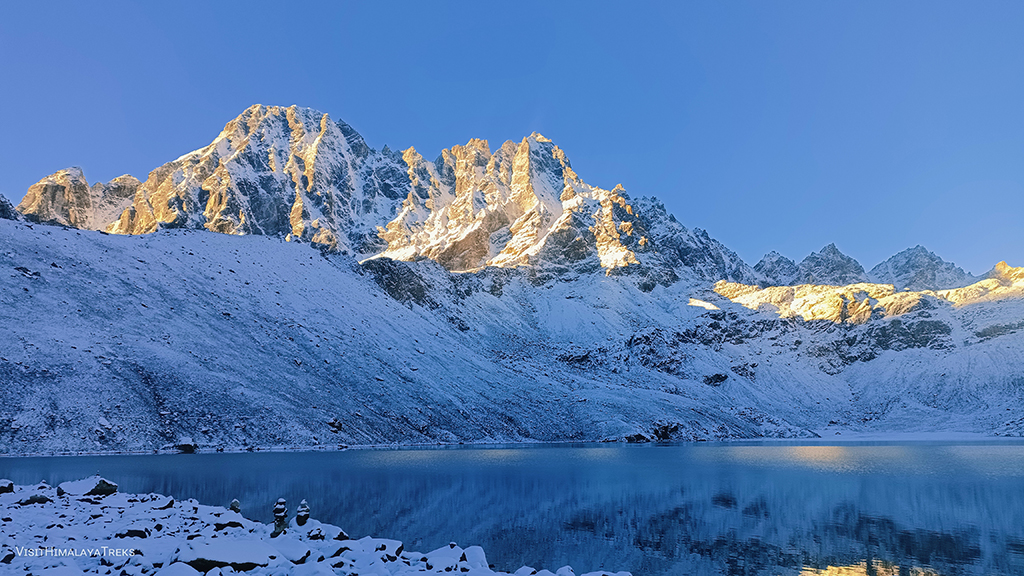
The Wonderful Gokyo Lakes and Himalayan Peaks view en route to Everest Three Pass Trek.
Seasonal Weather Challenges,
Spring Season,
With the pleasant temperatures and gorgeous rhododendron blooms, the spring season also brings with it a unique set of difficulties. Particularly at higher altitudes, routes may still be slippery and capped with snow. Trekkers may experience unpredictable weather patterns, such as occasional snowfalls or thunderstorms in the late season that can obstruct views of the mountains and make slippery routes. It is crucial to prepare well and have the right equipment for the various scenarios. Also, because spring is a popular trekking season, there are more people around, which may have an impact on the availability of teahouses and lodges along the trail.
Autumn Season,
Autumn is the best season for the Everest Three High Passes Trek, although it still poses some obstacles. Trekkers may experience cold temperatures even if the weather is more consistent than in other seasons, particularly at higher elevations and in the early morning or evening hours. Sudden weather changes might occur, causing unexpected snowfall or storms, requiring flexibility in trekking preparations. Autumn is one of the busiest seasons, with more trekkers on the trails. This may have an impact on accommodation availability and the quality of the trekking adventure as a whole. Even with progressive acclimatization, trekkers should be ready for the symptoms of high altitude, such as altitude sickness.
Monsoon/Summer Season,
The monsoon/summer season, which lasts from June to August, presents significant challenges for trekkers since it brings a gloomy sky and a lot of rain to the Everest region. It gets muddy and slippery on the trails, which makes it harder to navigate and increases the possibility of slips and falls. Frequent rain can also cause rivers and streams to rise in height, making river crossings more challenging. Trekkers need to be ready for poor visibility due to clouds and fog, which can obstruct views of the mountains for several days at a time. During this season, landslides are another risk that needs careful navigation in dangerous landscapes. Appropriate waterproof clothing and cautious preparation are essential for comfort and safety while trekking during the rain.
Winter Season,
The routes are covered in heavy snow and ice, making trekking physically challenging and necessitating specialist equipment such as crampons and ice axes for safe transit across high mountain passes. To avoid hypothermia and frostbite, one must wear layered clothes and insulated equipment in cold conditions, which frequently drop well below freezing. Short daylight hours restrict trekking time, necessitating early starts and effective trekking to achieve daily targets before sunset. There might not be as many possibilities for accommodation because inclement weather often forces teahouses and hotels to close. Winter is a rewarding but also challenging season for trekkers.
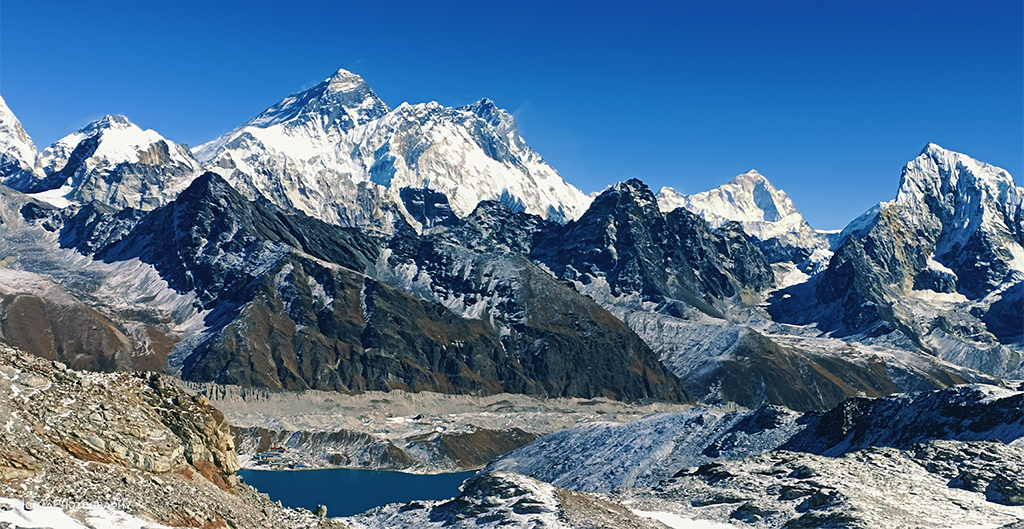
Gokyo Lake, Mount Everest, Lhotse and Makalu view from Renjo La Pass.
Safety and Health Protocols,
Importance of Acclimatization,
Acclimatization is an important part of the Everest Three Passes Trek since it prevents altitude sickness and ensures the trekker's health and safety throughout the seasons. The route includes traversing high-altitude passes including Kongma La, Cho La, and Renjo La, that rise to elevations above 5,000 meters (16,400 feet). The body must be able to adapt to decreasing oxygen levels at high elevations, regardless of the season. Appropriate acclimatization is necessary to handle mild to cold temperatures and variable weather conditions during the spring and autumn seasons, which are the most popular for trekking.
Even though the summer season is warmer and more humid, acclimatization is still crucial since unexpected increases in altitude can still result in severe altitude sickness. Cold temperatures and snow-covered routes add to the physical challenges of winter, requiring careful acclimation to avoid hypothermia and other altitude-related health difficulties. Including acclimatization days in itineraries, enables trekkers to gradually adjust to the altitude while trekking. This systematic technique lessens the possibility of acute mountain sickness (AMS), making trekking safer and more pleasurable in all seasons.
Signs and Treatments of Altitude Sickness,
Altitude sickness is a major risk for trekkers in the Everest Region. Headaches, nausea, lightheadedness, and dyspnea are some of the symptoms. It's important to properly acclimate, remain hydrated, and ascend gently to avoid altitude sickness. Take the appropriate safety measures and familiarize yourself with the symptoms before Everest Three Passes Trek.
Staying hydrated and Sun Protection,
At high elevations, dehydration is a prevalent problem because of the dry air and greater physical effort. Consume lots of water and avoid alcohol and coffee. Carry a hydration kit to ensure quick access to water when trekking. The Everest region is more exposed to UV radiation due to its high altitude and thin atmosphere. To protect your skin, use high-SPF sunscreen, put on spectacles with UV protection, and wear a hat.
Local Meteorological Reports and Weather Updates,
On the Everest Three Passes Trek, trekkers rely heavily on local meteorological forecasts and updates for critical information on the present and future weather. Trekkers may safely negotiate difficult terrain and high mountain passes like Kongma La, Cho La, and Renjo La by planning their daily itineraries with the assistance of accurate and timely weather predictions.
Trekkers can change their routes, prepare essential clothing, or seek shelter by using these updates, keeping them safe from weather risks including snowstorms, intense rain, or extremely cold temperatures. Local meteorological reports and weather updates also improve overall safety by lowering the danger of high-altitude sickness, hypothermia, and other weather-related health problems, leading to a more enjoyable and safe trekking adventure.
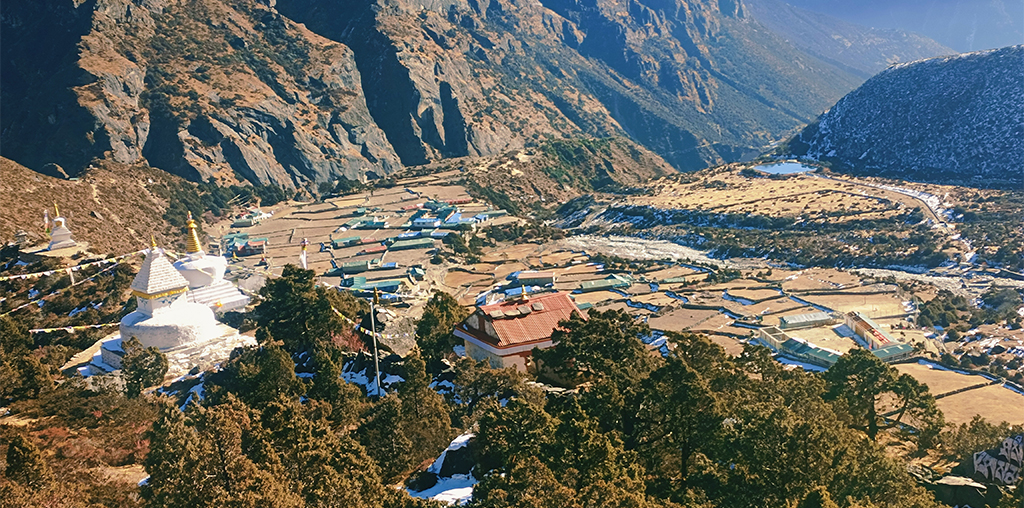
The Hidden Village Thame en route to Everest Three High Pass Trekking In Nepal
Effect of Weather on Routes,
Wet and Rough Trails,
In the lower sections especially during the monsoon season, routes can become muddy and treacherous due to rainfall and melting snow. To navigate through these landscapes carefully, trekking poles and strong footwear with sufficient grip are necessary.
Ice and Snow,
At higher elevations, snow and ice are frequent, particularly in the winter and early spring. These circumstances could increase the difficulty of the routes and raise the possibility of falling or slipping. For safe navigation, appropriate equipment such as crampons and ice axes are essential.
Crossings of Rivers,
River crossings may become riskier during the monsoon season due to rising water levels. If the water level is too high, think about taking an alternate path and be ready for intense waves. The trekking pole is an important piece of equipment that helps in crossing the river.
The Everest Three Passes Trekking Summary,
The Everest Three Passes Trekking during all seasons of the year can be surprising for most travelers. One can enjoy depending upon trekkers' interests and holidays at the right time of the year. Some interested people might be keen to enjoy the adventure during the best seasons of spring and autumn. But some people will not have the chance to be at the right time due to work pressures. As well as not having a holiday from the job to join for the trek to Everest Three Passes.
After going through this information, all worldwide people will get the messages. The Everest Three Passes can be done during all seasons of the year depending upon one holiday duration. For more details regarding the trip either join with group for fixed departure dates. As well as for solo or private tailor-made or customized treks can contact us to organize a Trekking to Everest Three High Passes In the Khumbu region of Nepal.
More resources about Everest Three High Passes Trekking In Nepal.
01: What Is The Difficulty Level Of The Everest Three High Passes Trek.
02: A Lifetime Travel Adventure Over The Khumbu Himalayas Of Nepal.
